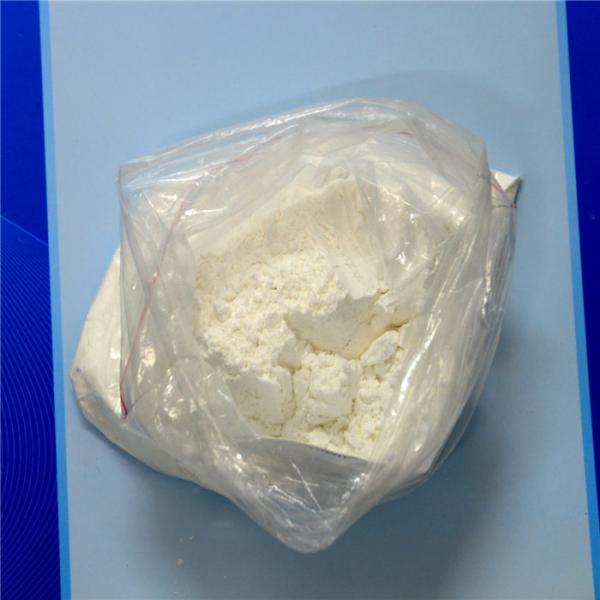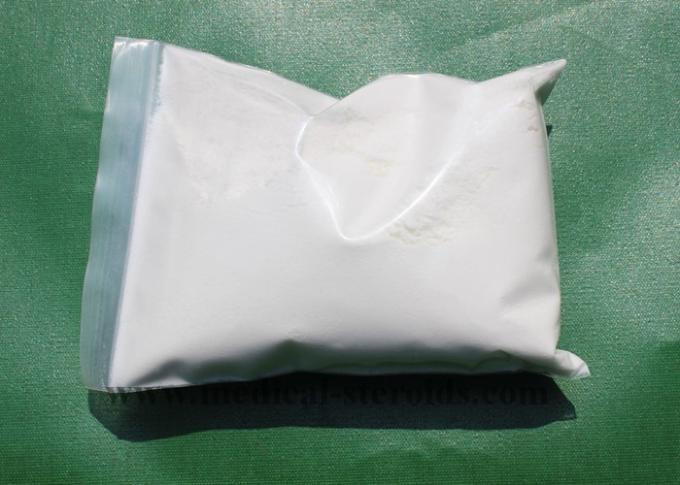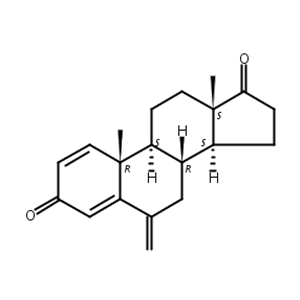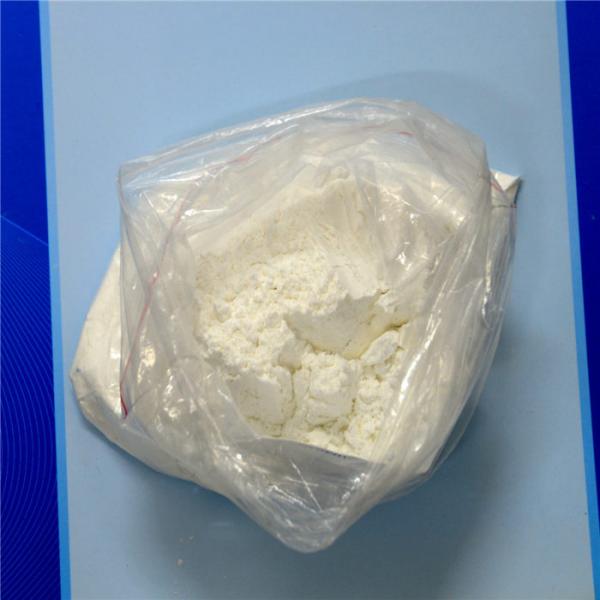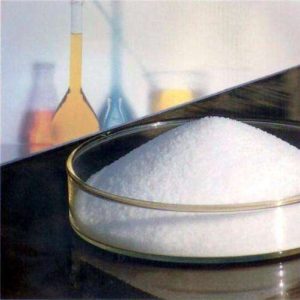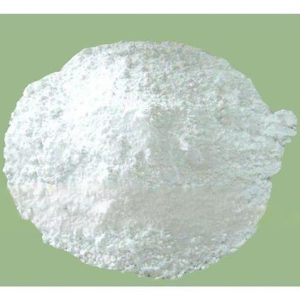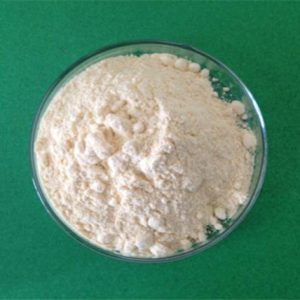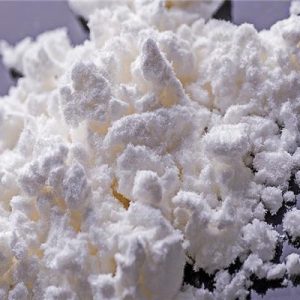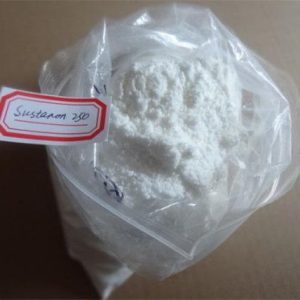what is Exemestane, sold under the brand name Aromasin among others, is a medication used to treat breast cancer. It is a member of the class of antiestrogens known as aromatase inhibitors. Some breast cancers require estrogen to grow. Those cancers have estrogen receptors (ERs), and are called ER-positive. They may also be called estrogen-responsive, hormonally-responsive, or hormone-receptor-positive. Aromatase is an enzyme that synthesizes estrogen. Aromatase inhibitors block the synthesis of estrogen. This lowers the estrogen level, and slows the growth of cancers.
Medical uses
buy Exemestane is indicated for the adjuvant treatment of postmenopausal women with estrogen-receptor positive early breast cancer who have received two to three years of tamoxifen and are switched to it for completion of a total of five consecutive years of adjuvant hormonal therapy. US FDA approval was in October 1999.
Exemestane is also indicated for the treatment of advanced breast cancer in postmenopausal women whose disease has progressed following tamoxifen therapy.
For premenopausal women with hormone-receptor–positive breast cancer, adjuvant treatment with ovarian suppression plus the aromatase inhibitor exemestane, as compared with ovarian suppression plus tamoxifen, provides a new treatment option that reduces the risk of recurrence. The TEXT and SOFT trials demonstrated improved disease free survival in patients treated with exemestane and ovarian suppression compared to the tamoxifen and ovarian suppression group. Premenopausal women who receive ovarian suppression may now benefit from an aromatase inhibitor, a class of drugs that until now has been recommended only for postmenopausal women.
Contraindications
The drug is contraindicated in premenopausal women, which of course includes pregnant and lactating women.
exemestane side effects
The most common side effects (more than 10% of patients) are hot flashes and sweating, which are typical of estrogen deficiency as caused by exemestane, and also insomnia, headache, and joint pain. Nausea and fatigue are mainly observed in patients with advanced breast cancer.
An occasional decrease in lymphocytes has been observed in approximately 20% of patients receiving Aromasin, particularly in patients with pre-existing lymphopenia.
Exemestane has androgenic properties similarly to formestane and can produce androgenic side effects such as acne and weight gain, although these are generally associated with supratherapeutic dosages of the drug.
Overdose
Single doses of up to at least 32-fold (800 mg), as well as continuous therapy with 24-fold (600 mg) the usual daily dose are well tolerated. No life-threatening overdosing is known in humans, but only in animal studies with 2000- to 4000-fold doses (adjusted to body surface area).
Interactions
Exemestane is metabolized by the liver enzyme CYP3A4. While the CYP3A4 inhibitor ketoconazole had no significant effect on exemestane levels in a clinical trial, the strong CYP3A4 inductor rifampicin significantly cut exemenstane levels about in half (AUC −54%, Cmax −41% for a single dose), potentially compromising its effectiveness. Other 3A4 inductors such as carbamazepine and St John’s Wort are expected to have similar effects. The clinical relevance of this effect has not been investigated.
Estrogens probably reduce exemestane effectiveness:[8] It would usually be counter-productive to reduce the body’s estrogen synthesis with exemestane and then substitute estrogen with pharmaceutica.
Pharmacodynamics
Exemestane is an oral steroidal aromatase inhibitor that is used in ER-positive breast cancer in addition to surgery and/or radiation in post-menopausal women.
The main source of estrogen is the ovaries in premenopausal women, while in post-menopausal women most of the body’s estrogen is produced via the conversion of androgens into estrogen by the aromatase enzyme in the peripheral tissues (i.e. adipose tissue like that of the breast) and a number of sites in the brain. Estrogen is produced locally via the actions of the aromatase enzyme in these peripheral tissues where it acts locally. Any circulating estrogen in post-menopausal women as well as men is the result of estrogen escaping local metabolism and entering the circulatory system.
Exemestane is an irreversible, steroidal aromatase inactivator of type I, structurally related to the natural substrate 4-androstenedione. It acts as a false substrate for the aromatase enzyme, and is processed to an intermediate that binds irreversibly to the active site of the enzyme causing its inactivation, an effect also known as “suicide inhibition.” By being structurally similar to enzyme targets, exemestane permanently binds to the enzymes, preventing them from converting androgen into estrogen.
Type II aromatase inhibitors such as anastrozole and letrozole, by contrast, are not steroids and work by interfering with the aromatase’s heme.
A study conducted on young adult males found that the estrogen suppression rate for exemestane varied from 35% for estradiol (E2) to 70% for estrone (E1).
vte Pharmacodynamics of aromatase inhibitors
Pharmacokinetics
Exemestane is quickly absorbed from the gut, but undergoes a strong first-pass effect in the liver. Highest blood plasma concentrations are reached after 1.2 hours in breast cancer patients and after 2.9 hours in healthy subjects. Maximal aromatase inhibition occurs after two to three days. 90% of the absorbed substance are bound to plasma proteins. The liver enzyme CYP3A4 oxidizes the methylidene group in position 6, and the 17-keto group (on the five-membered ring) is reduced by aldo-keto reductases to an alcohol. Of the resulting metabolites, 40% are excreted via the urine and 40% via the feces within a week. The original substance accounts for only 1% of excretion in the urine. The terminal half-life is 24 hours.
Chemistry
4-Androstenedione for comparison
Exemestane is known chemically as 6-methylideneandrosta-1,4-diene-3,17-dione. Like the aromatase inhibitors formestane and atamestane, exemestane is a steroid that is structurally similar to 4-androstenedione, the natural substrate of aromatase. It is distinguished from the natural substance only by the methylidene group in position 6 and an additional double bond in position 1.
Pure exemestane is a white to off-white powder that is soluble in DMSO to at least 20 mg/mL. Optical rotation [α]D is +250 to 300° (per g/100 cm³ and decimetre at 589 nm wavelength).
Society and culture
Performance enhancement
Exemestane has been used in doping to raise luteinizing hormone (LH) and follicle stimulating hormone (FSH) levels, which in turn increases the ratio of male over female sexual hormones and so improves performance. The drug also counteracts gynecomastia as well as fat and water retention following excessive aromatase production due to testosterone doping.
Indications and Usage Exemestane is an irreversible steroid aromatase inhibitor. Its structure is similar to that of aromatase’s natural substrate, androstenedione, and acts as a pseudosubstrate. Postmenopausal women’s estrogen is mainly converted from androgen (produced by the adrenal cortex) by aromatase in the surrounding tissue. This drug irreversibly binds with the active site on aromatase to deactivate it, thus dramatically lower estrogen levels in the blood circulation of postmenopausal women. By inhibiting aromatase to lower estrogen levels, it can be used to treat hormone-dependent breast cancer in postmenopausal women.
Exemestane is suitable for treating advanced breast cancer in naturally or artificially postmenopausal women that has not responded well to tamoxifen treatment. It is also suitable for treating estrogen and progesterone receptor positive postmenopausal advanced breast cancer, and it can also be used to treat metastasized breast cancer and as adjuvant therapy for early breast cancer.
Pharmacokinetics This drug has no noticeable effect on adrenal corticosteroids biosynthesis. Even when its concentration is over 600 times the concentration required to inhibit aromatase, it still has no noticeable effect the other enzymes in the corticosteroid production pathway.
This drug is absorbed quickly when taken orally and will affect food absorption. Its oral bioavailability is 42%. Postmenopausal women have a higher absorption rate than healthy test subjects. Patients reach peak blood concentration 2-4 hours after intake, and the peak lasts for an average of 1.2 hours, which is 2.9 hours shorter than healthy subjects. It mainly binds to Α1-acid glycoprotein and protein, and its overall binding rate to protein is 90%. It is mainly metabolized by the liver, the metabolite is inactive 17-Hydrecoxetron, and its clearing half-life is 24 hours. It is mostly excreted through urine and feces, which both account for 42% of the consumed amount.
Description Exemestane was launched in US and other countries for the treatment of estrogendependent tumors and postmenopausal breast cancer. It is a novel steroidal compound structurally related to the natural substrate for the biosynthesis of estrogen, androstanedione, and can be synthesized by methylidenation of androsta-1, 4-dien- 17beta-ol-3-one in 6 position then oxidation of the alcohol function. Exemestane is an irreversible inactivator of the aromatase enzyme system, so inducing in vivo a dose-related sustained suppression of serum estrogen and minimal endocrine activity. It is the first steroidal representative of the third-generation of orally active aromatase inhibitors with a highly potent and selective mechanism of action, displaying good tolerability and safety profile. In rats with DMBA-induced mammary tumors, 10 to 100 mglkg of exemestan administered po twice-daily for 4 weeks resulted in 76 to 88% regression. In women failing anti-estrogen therapy with tamoxifen, this agent has demonstrated high activity in locally advanced or metastatic disease. In addition, it may also have potential for breast cancer prevention.exemestane vs letrozole
Chemical Properties white to light yellow crystal powder
Uses An antineoplastic (hormonal)
Uses antiinfective
Uses Labeled Exemestane, intended for use as an internal standard for the quantification of Exemestane by GC- or LC-mass spectrometry.
Definition ChEBI: A 17-oxo steroid that is androsta-1,4-diene-3,17-dione in which the hydrogens at position 6 are replaced by a double bond to a methylene group. A selective inhibitor of the aromatase (oestrogen synthase) system, it is used in the treatment of advanced brea t cancer.
Pronunciation /ˌɛksəˈmɛˌsteɪn/
EK-sə-ME-stayn
Trade names Aromasin
Other names FCE-24304
AHFS/Drugs.com Monograph
MedlinePlus a607006
Routes of administration By mouth
Drug class Aromatase inhibitor; Antiestrogen
ATC code L02BG06 (WHO)
Exemestane Chemical Properties
Melting point 155.13°C
Boiling point 453.7±45.0 °C(Predicted)
density 1.13±0.1 g/cm3(Predicted)
storage temp. 2-8°C
solubility DMSO: ≥20mg/mL
form powder
color white to off-white
optical activity [α]/D +250 to +300°, c = 1 in methanol
InChI InChI=1S/C20H24O2/c1-12-10-14-15-4-5-18(22)20(15,3)9-7-16(14)19(2)8-6-13(21)11-17(12)19/h6,8,11,14-16H,1,4-5,7,9-10H2,2-3H3/t14-,15-,16-,19+,20-/m0/s1
InChIKey BFYIZQONLCFLEV-DAELLWKTSA-N
SMILES C1(=O)C=C2[C@](C)(C=C1)[C@]1([H])[C@]([H])([C@@]3([H])[C@@](CC1)(C)C(=O)CC3)CC2=C
CAS DataBase Reference 107868-30-4(CAS DataBase Reference)
More Introduction:https://en.wikipedia.org/wiki/Exemestane
